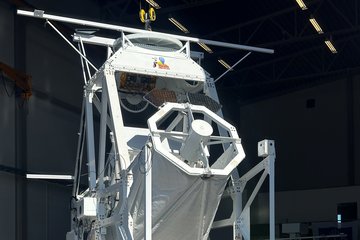All genres
141.
Talk
Water and Ice - From Rosetta back to the Moon. 2. Beijing International conference on lunar and Deep-Space Exploration, Beijing, China (2015)
142.
Talk
Exploring planetary surfaces with remote and in-situ tools. Inivited Seminar, Beijing, China (2015)
143.
Talk
Der neue Mond - was wir in den letzten 10 Jahren Neues über den alten Mond gelernt haben. Bundesweite Lehrer-Fortbildung zur Astronomie, Heidelberg,Germany (2015)
144.
Talk
Raumflugwesen und Weltraumforschung "Die Rückkehr zum Mond". Seminar für Raumflugwesen und Weltraumforschung, München, Germany (2015)
145.
Talk
Long-lasting 3He-rich solar energetic particle sources. STEREO SEP meeting, Laurel, Maryland, USA (2014)
146.
Poster
Entering Schrödinger’s Pyroclastic Vent and PSR: A Trafficability Analysis for the next Generation of Lunar Exploration Rovers. EGU General Assembly 2019, Vienna, Austria (2019)
147.
Poster
On the variability of lunar soil properties – bearing capacity. EGU General Assembly 2019, Vienna, Austria (2019)
148.
Poster
Lunar Rockfall Detection and Mapping usinng Deep Neural Networks. 50th Lunar and Planetary Science Conference, The Woodlands, Texas, USA (2019)
149.
Poster
Automated Detection and Mapping of lunar Rockfalls using a CNN. 1st Swiss “Workshop on Machine Learning for Environmental and Geosciences” (MLEG2019), Dübendorf, Switzerland (2019)
150.
Poster
Automated detection of lunar rockfalls using a Convolutional Neural Network. AGU Fall Meeting, Washington, D.C., USA (2018)
151.
Poster
In situ resource exploitation using lunar landslide geomorphology. Planetary Exploration 2061, Lausanne, Switzerland (2018)
152.
Poster
Automatic Detection of Rockfalls with Deep Neural Networks: Lessons learned on the Moon and Mars. ESA Living Planet Symposium, Milan, Italy (2018)
153.
Poster
Lunar Rock Boulders as a Tool in comparative Planetology to investigate Rock Weathering. 7th European Lunar Symposium , Manchester, U.K. (2018)
154.
Poster
Assessing the Primordial Character of Comets and of 67P/Churyumov-Gerasimenko. 50th ESLAB Symposium 2016, Leiden, Netherlands (2016)
155.
Poster
Assessing the Primordial Character of Comets and of 67P/Churyumov-Gerasimenko. COMETS 2016, Toulouse, France (2016)











